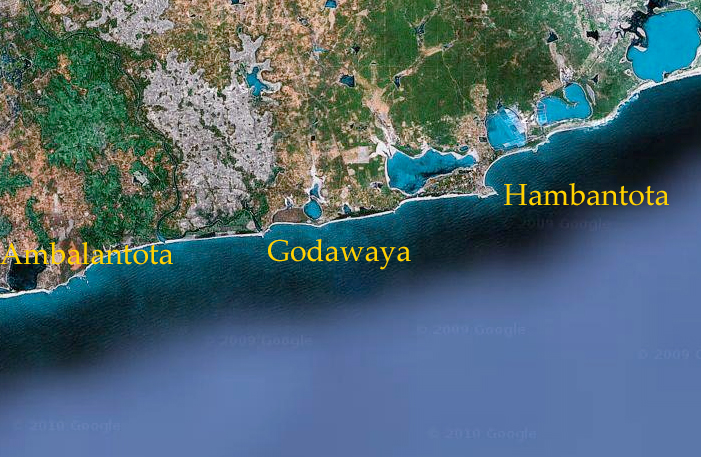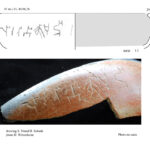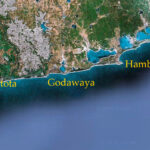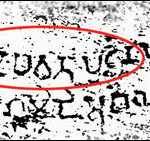

Hambanthottam

A potsherd inscription in Tamil Brahmi found some times back in an archaeological excavation by a German team at Tissamaharama in the Hambantota district of the Southern Province of Sri Lanka can be interpreted as meaning an equipment to measure, and thus evidences the presence of ordinary Tamil speaking people in the population of that region as early as at 2200 years before present, says archaeologist and epigraphist, Ponnampalam Ragupathy. The identification of the script of the legend as Tamil Brahmi and the decipherment getting the reading Thira’li Mu’ri in Tamil by veteran epigraphist Iravatham Mahadevan in an article last month in The Hindu, has stirred interest of the archaeological circles in the island to unearth this old find from obscurity to limelight.
Megalithic graffiti, the lineage of which is traced back to the Indus Writing, appearing along with phonetic Brahmi in suggesting ways, that too in combination with Tamil/Dravidian words during the transition period of megalithic into early historic, is a very significant topic for serious further investigation. In fact, the topic is of wider academic significance.
In 1980, a similar find, a steatite seal having graffiti in the first line and Brahmi in the second line, has been found in the excavation of a megalithic burial at Aanaikkoaddai in the Jaffna Peninsula and its significance has already been discussed by two of the excavators (Indrapala, K., 26-04-1981, The Hindu; 2006, The Evolution of an Ethnic Identity, pp 337-338; Ragupathy. P., 09-07-1981, The Hindu; 1987, Early Settlements in Jaffna: An Archaeological Survey, pp. 199-204).
Many pottery fragments having legends written in the combination of Brahmi and graffiti have also been found in the excavations of the megalithic site at Kodumanal in Tamil Nadu by Y. Subbarayalu and K. Rajan. (Subbarayalu. Y., 1988 and 1996, unpublished, cited by Mahadevan. I., ibid., pp. 206-210).
As far as the Tissamaharama find is concerned it may not perhaps mean the presence of a Tamil trade guild but means the presence of ordinary Tamil speaking people in the population.
Jars, Black and Red ware pottery and some timber sections were found in 2008 at a depth of 31 metres under sea, at a probable shipwreck site around 3 km off the coast of Godawaya, between Hambantota and Ambalantota in the Southern Province. Earlier, divers retrieved a stone bench having symbols engraved on it from the site. Stone pillars, probably remains of an old maritime structure, were excavated and reported in 2001 at Godawaya fishing village, while a stone anchor was found in the sea near the coast in 2003. A late Brahmi inscription of 2nd century CE found on a rock at the Buddhist temple of Godawaya gives the ancient name of the port as Goda-pavata Patana, which is largely Dravidian mixed with Prakrit.
refernce
The name Godapawatha, Gota pabbata or Godawaya means, mountain with boulders (Gota – Short and round / Pabbata – Rocky Mountain).
TamilNet: 28.07.10 Tissamaharama potsherd evidences ordinary early Tamils among population
TamilNet: 21.10.10 Tissamaharama Tamil Brahmi inscription ‘missing’
TamilNet: 16.09.10 Ancient port near Hambantota had Dravidian name mixed with Prakrit


